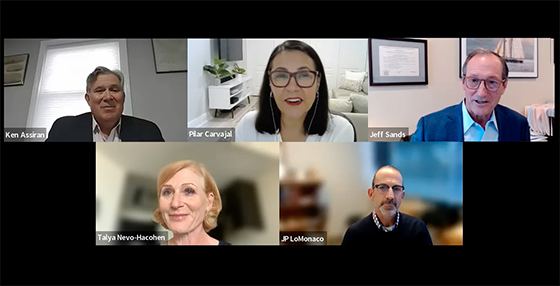It has undoubtedly been a very difficult time for seniors housing owners, operators and investors.
The COVID-19 pandemic led to widespread shutdowns that forced communities to turn away visitors and prospective new residents for months, which in turn caused occupancy rates to crater. Then, just as the industry started to come back, labor challenges, inflation and rising interest rates put the brakes on that recovery.
“We’ve been through the most unusual period ever for our industry,” said JP LoMonaco, president of Valuation & Information Group.
LoMonaco made those comments while moderating a webinar panel titled “What Will 2023 Hold for Seniors Housing Investment & Acquisition Activity?” Seniors Housing Business hosted the webinar, which Valuation & Information Group sponsored. Panelists included Ken Assiran, Capital Funding Group; Pilar Carvajal, Innovation Senior Living; Jeff Sands, HJ Sims; and Talya Nevo-Hacohen, Sabra Health Care REIT.
“The first issue that really started hitting us was wages,” said Assiran. “Wage growth has been extremely high. The Fed’s been raising rates and occupancies haven’t come back to where they had been pre-COVID. We’re getting it on all sides — on the revenue side, we can’t cover the expense increases in most markets. Margins are squeezed.”
“Were not used to that,” added Assiran. “When we went through recessions in the past, seniors housing has skated through and hasn’t been hit really hard. This time it’s different.”
Initial estimates for recovery from the COVID-19 pandemic were 12 to 18 months, noted Nevo-Hacohen. Unfortunately, those estimates didn’t account for the other economic headwinds that came afterward.
“We thought by 2023 occupancy would be back and things would start to normalize,” she said. “We’ve had these other surges — wage increases, staffing shortages — that have been a series of jolts to the industry. It has changed the timeline for recovery in a way that is very challenging for anyone trying to underwrite a deal.”
Another man’s treasure
Of course, every challenge for one company is an opportunity for another. Acquisitions of distressed properties, which industry experts have been forecasting since the pandemic began almost three years ago, finally started to happen in the second half of this year.
Sands said one reason the wave has arrived is that many skilled nursing owners and operators, temporarily buoyed by federal aid during the pandemic, finally started to run out of money.
“If you look at skilled nursing operators during late 2020 to 2021, there was so much aid provided to them. I’d never seen balance sheets so flush,” said Sands. “This year became a race to get occupancy up before all that cash flow ran out. For a lot of people, August and September of 2022 is when it started to run out. It’s created a lot of consolidation and sales.”
Carvajal added that, for companies like hers, this presents an opportunity for savvy investors that know how to turn a property around.
“I’ve been an operator for 20 years and cut my teeth on converting public housing into assisted living, so we got really specialized with Medicaid. We’re seeing a lot of opportunities to purchase low, and then really increase the number of beds we’re serving in a building by making rooms semi-private or serving more Medicaid patients, depending on what that market would support.
“Because we have expertise on the Medicaid side, we’re able to serve a demographic that has been sorely neglected by the industry. We see a great opportunity right now.”
To watch the full webinar, click here.
— Jeff Shaw

